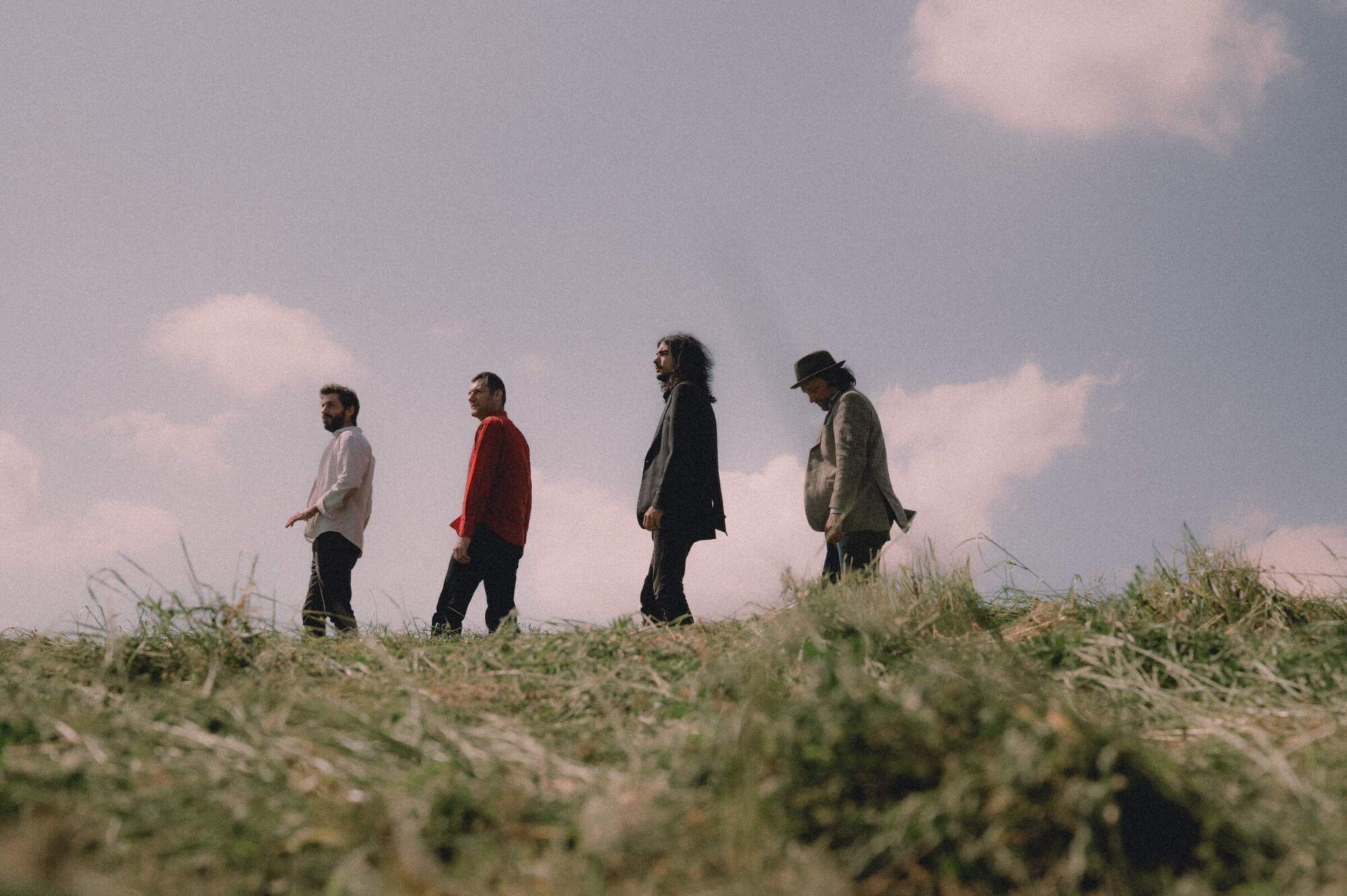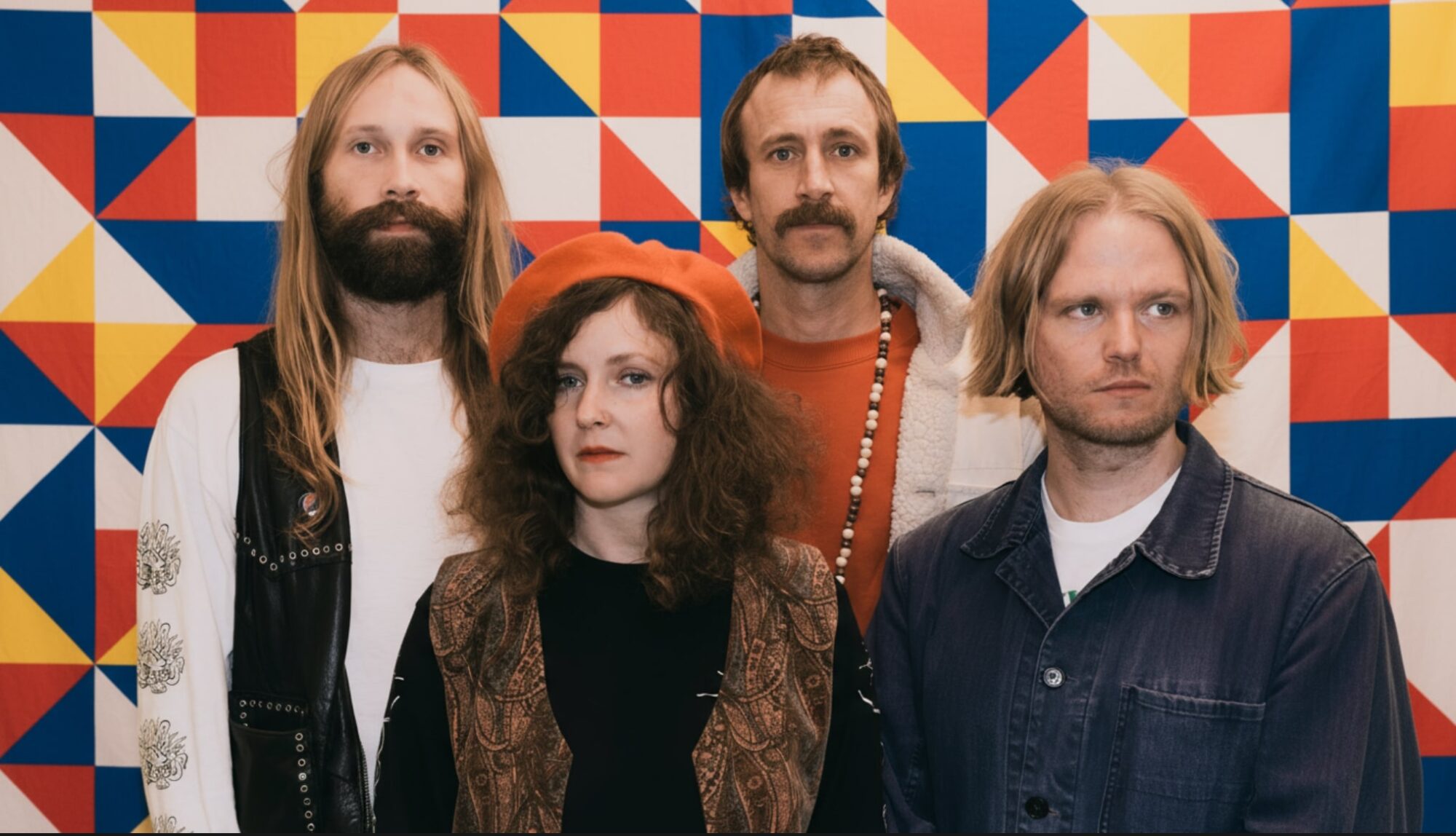‘Kraut Fusion’
One phenomena you will find when deep diving into the progressive rock waters, is that you’ll discover that Germany had an overabundance of jazz rock bands operating throughout the mid 1970s and into the 1980s. More so than anywhere else, except maybe the USA, but the German bands had a different perspective than the Americans.
There are basically 3 types of fusion bands emanating from the region. 1) Experienced jazz collectives from the turn of the 1970 decade, that were experimenting with rock’s textures and sounds. This isn’t really “fusion” per se, more what I would call jazz rock, but I’m including them all in here, since I don’t want to have to explain this every time someone recommends Wolfgang Dauner to me. 2) Jazz guys doing instrumental rock, and perhaps very technical at that. This is the pure definition of fusion in my mind, and the most common use of the term. In America, almost all the bands who operated in the fusion field, came from jazz circles. 3) Rock guys doing jazz. Now this is where Germany separates from the pack. You had a number of established underground psych and rock heads (aka ‘Krautrock’) that suddenly began to experiment with jazz forms. This, to me anyway, represents some of the more exciting bands in this list.
I’ll try to be discerning though, as it would be easy to add every ‘Krautrock’ band with a saxophone or flute into the list (for example, say Nosferatu, Haze, Subject ESQ, or Ardo Dombec). There’s also a very large German jazz scene, without fusion/rock elements. I’m not going to add all of those.
For this list I’m including bands who originated in Germany, Austria, and Switzerland. Also, I’m only adding bands I’ve actually heard.
I’ll start with the progenitors of the movement, and then after that, work my way from my personal favorites to the bottom. There are no real bad albums in this genre, that I’ve heard anyway. Some are just more typical (average) than others. Many of these are very obscure, and I only have a CD-R copy myself. The last entries will be albums from the German festivals of the late 70s.
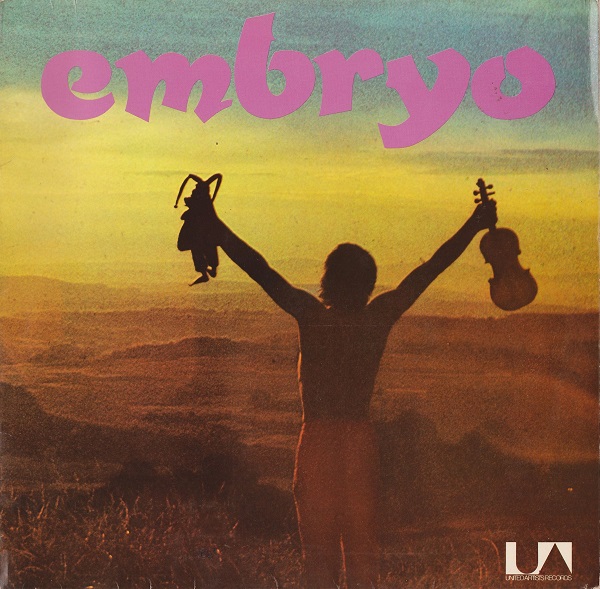
The Progenitors
The key players of the movement are in this section.
Embryo
This is pretty much ground zero for this list. In fact, if you don’t like Embryo, you may want to skip the rest. I’m a huge fan myself of their 70s albums, and they are one of the few surviving groups from the late 60s to have never sold out to commercialism. They have my eternal respect, even if I don’t enjoy much of their output of the last 25 years or so. They changed dramatically over the years, but always for artistic purposes. They started as a psychedelic rock band on Opal, before moving onto their ‘Krautrock’ masterpiece Embryo’s Rache. But it was on Steig Aus, that Embryo laid down the foundation of their jazz rock sound. From there they added more funk, and yes, fusion to the mix throughout the entire 70s, ending at Apo Calypso. Then came the fantastic Embryo’s Reise, and their first forays into world fusion, with perhaps one last look back to an older style on Zack Glück. From there they became a hardcore world/jazz band.
Best representative (for this list): Steig Aus. My personal favorite of their entire oeuvre is Embryo’s Rache.
Xhol Caravan
Embryo may have been the most important group in the genre, but Xhol Caravan is arguably the first. Their career ended way too short, but all of their albums are recommended, including the multitude of live archival releases. Some of their work under the moniker of Xhol is pure cosmic ‘Krautrock’ (especially ‘Motherf*ckers’), and gets away from this list, but still worth investigating.
Best album representative: Electrip.
Kraan
Kraan is another stalwart of the ‘Kraut Fusion’ movement. In fact, they probably best represent the sound in its purest form. They were quick to embrace funk, as did most bands in this field, as it was a prudent commercial thing to do.
Best album representative: Kraan.

Passport
Passport are more on the “white bread” side of the house, but there’s no denying Klaus Doldinger’s large shadow over the entire scene. This is the kind of jazz fusion you can play at a house party, and not have the guests running and screaming out of the room. You need a few bands like that…
Best album representative: Second Passport.
Wolfgang Dauner / Et Cetera / The Wolfgang Dauner Group
Wolfgang Dauner is the best example of my scenario #1 listed in the prelude. His influence was enormous at the time. He was an experienced jazzer who experimented with rock forms. I’m including all of his outfits into this one listing. His ensemble Et Cetera was his crowning achievement, but there are many other collective’s he put together that are worthy of pursuit.
Best album representative: Et Cetera (1971 release).
The followers
Starting here, I’m listing bands from my favorites to the least.
Tier 1
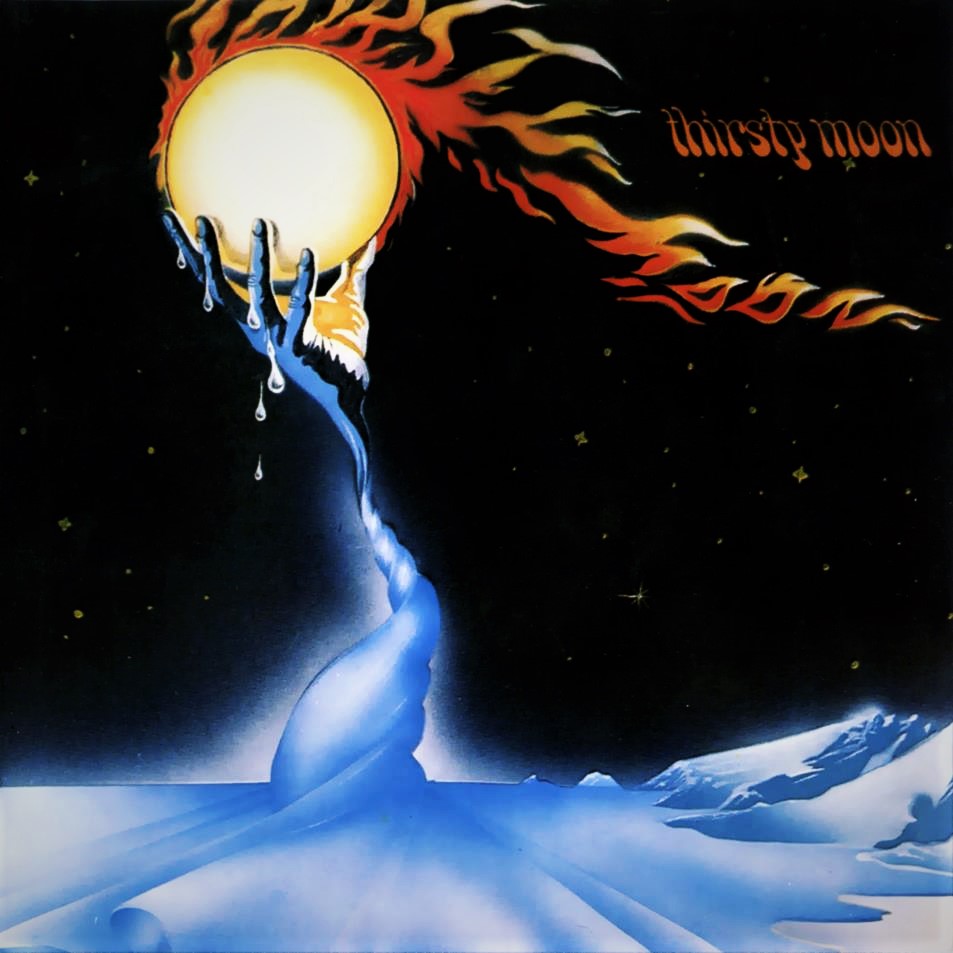
Tortilla Flat
Probably my favorite of all the obscurities in this genre. Tortilla Flat’s sole album is an instrumental exercise in superb jazz composition combined with tight rhythms and driving rock guitar. Tortilla Flat were a six-piece with flute, electric and acoustic guitar, bass/fuzz bass, drums, percussion, and electric piano. The primary lead instrument here is the flute, with plenty of room given to the Rhodes piano and biting fuzz guitar, while the melodies are bouncy and playful, recalling Supersister’s 1970 masterpiece Present From Nancy.
Ginga Rale Band
Ginga Rale Band is a bulls eye for those that love the German ‘Kraut Fusion style’, with the added bonus of successfully re-creating the atmosphere of the edgy cosmic Berlin-styled ‘Krautrock’ of 1971.
Missus Beastly
Missus Beastly can be seen as the brother band of Embryo, and they played often together throughout the mid to late 1970s. They were also joined at the hip with their label kollektiv April Records, later known as Schneeball for legal reasons. Now the debut album from 1969, is pure blues rock, and I’m not including it in my consideration. There’s also a splinter group from that incarnation, that has two unauthorized releases, and I’m leaving them out as well. By 1974, the band had changed dramatically to a jazz rock sound, which they took to the end of their career. For my tastes, the 1974 self titled album is about as good as it gets for ‘Kraut Fusion’, and mandatory listening.
Eiliff
Another one of the all-time greats. If you like long form psychedelic jamming organ and guitar, but from those raised in the jazz school, then Eiliff is hard to beat. They have two albums and two archival releases, all of which are very good. But the two studio albums are divine. My vote goes to the debut, but it’s close.
Thirsty Moon
Another one of my all-time favorites, Thirsty Moon blended jazz rock with insane Krautrock, for that perfect recipe of a sound. The debut is definitely my favorite, but You’ll Never Come Back is fantastic as well. They lost their way after that though, and tread carefully afterward.
Brainstorm
Brainstorm had two fantastic studio albums as well as two fine archival releases to date. Like many of my favorite bands in this genre, they inject a strong Canterbury element into their sound. ‘Smile A While’ is my favorite, but I enjoy them all.
Fashion Pink
Fashion Pink is the ancestor of Brainstorm. They have two fine archival releases. Not necessarily this high on the favorites list (though they are great), but adding here for reference.
Erna Schmidt
An extraordinary archival find from Garden of Delights. Erna Schmidt mixes underground Krautock with jazz rock forms. They were to be released on the Ohr label originally, and that would have been the perfect label for their music.
Kollektiv
One of the best German Krautrock influenced jazz groups from the entire scene. The missing link between Xhol Caravan and the late 70’s fusion movement in Germany (Mosaik, Cry Freedom, Morpheus, Katamaran, Munju, etc…). Essential. There are two other archival releases that are just as fantastic as the Brain label album.
Sunbirds
In my mind, Sunbirds is perhaps the best of the jazz based groups experimenting with rock forms. Musically the Sunbirds’ albums can best be qualified as ‘flute groovers’. That is to say, they are seasoned in the jazz idiom, but also wanted to venture into the psychedelic sounds of the day. Chris Hinze, Lloyd McNeill, and Bjorn J:Son Lindh did this too. But the Sunbirds also had that Krautrock thing going on, and you know they were hip to Wolfgang Dauner, Association P.C. and the whole gang at MPS Records.
Annexus Quam
Annexus Quam were an understated bunch, never really reaching the insane climaxes of their brothers in undergroundia like Tangerine Dream, Guru Guru, or Ash Ra Tempel. However they were 7 experienced jazzers who knew how to set the perfect ‘Krautrock’ atmosphere.
Roman Bunka
Guitarist from Embryo who released one fantastic solo album.
Guru Guru
“Guru Guru?” you plead. Well, yes they did start out as experienced jazz warriors before recording a single album. But their first 4 albums are pure blitzed out psychedelic ‘Krautrock’, and I’m not considering those for this list. But when Eiliff’s guitarist left to join them, their sound changed dramatically on ‘Dance of the Flames’, and the sole reason I have them listed this high up. After this they did continue in that mid 70s funky fusion capacity, but they never came close to the greatness they achieved with ‘Flames’.
Moira
Certainly one of the more obscure bands from the vast Gunderground, Moira were a fascinating progressive fusion collective formed by veterans of the Krautrock scene including Edgar Hoffman (Embryo) and Butze Fischer (Missus Beastly, Guru Guru, Embryo). Both their albums were recorded for the Schneeball label, the record consortium setup by members of Embryo and Missus Beastly. Musically, Moira fit snugly into the label’s distinct school of fusion and are part of the German “M” scene of jazz rock groups (Morpheus, Missus Beastly, Mosaik, Munju). Their second album sounds as if 1974 never left us.
Out of Focus
Out of Focus started more in the psychedelic hard rock vein, and moved to jazz rock by their sophomore release. By the time of Four Letter Monday Afternoon, the band had begun to move into the same realm as Soft Machine circa III.They also have 3 fine archival releases.
Tier 2
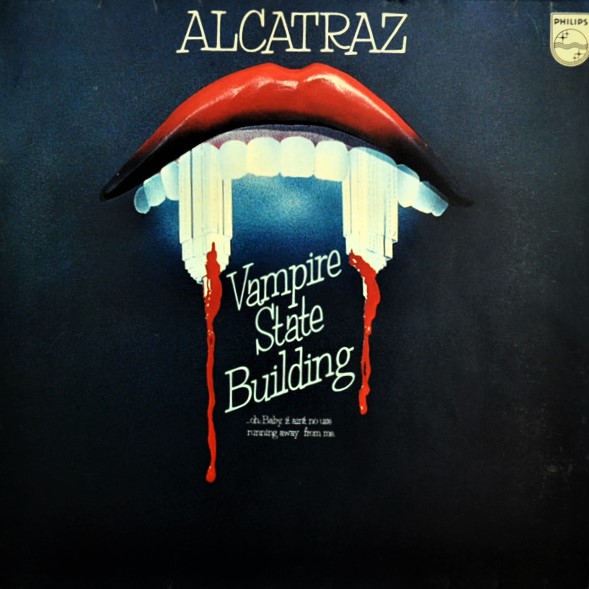
Aera
A prolific jazz rock group from the 70s, who have some superb albums mixed in with more ordinary efforts. They also have some fine archival releases, and the best would be ‘Mechelwind’, which was recorded prior to their debut.
Muck Groh
Head honcho of Aera above. Guitarist Muck Groh’s first solo work answers the question: What would have Aera’s earlier albums sounded like if they weren’t so ‘jazzy saxy’? And the progressive-folk-with-female-vocals on side 2 gives the album a certain Emma Myldenberger / Rebekka / Werwolf feel that is most welcome in this fusion setting. He was also is in another group called Grotesk, that I have noted further down the list.
Alcatraz
Absolutely one of the strangest bands to ever come from the original Krautrock era. Their debut Vampire State Building is an excellent jazz tinged ‘Kraut fusion’ album – very much a product of its day and certainly a classic of the genre. Had they stopped there, they would’ve been like countless German one-offs from the early 1970s. But they resurfaced in the late 1970s, not as a pop band like most of their former brethren, but a totally off the wall band, who changed style from album to album. Energie Programm in Rock mixed complex progressive rock with polit-rock vocal sections. Because of the difficult music presented, it recalls the band Oktober or perhaps PP Zahl. But on their next album Live (Trockeneis Zum Frühstück) they had switched gears entirely and tried their hand had instrumental jazz fusion. Then No. 4 demonstrates an excellent guitar fronted hard rock album similar to perhaps Mahogany Rush.
Altona
Altona play a tight, energetic styled jazz rock, similar to other ‘Kraut fusion’ bands such as Moira, Missus Beastly, and Release Music Orchestra. The vocals are gruff in that bluesy way, more akin to what you would hear in the early 1970s from similar genre bands operating in Germany and England.
Toto Blanke
Blanke is the guitarist for Association P.C., whose solo works (including Electric Circus) are more interesting on the whole -, to me at least. I recommend Spider’s Dance to start, a very Mahavishnu Orchestra type work…
Catch Up
A fine band with two albums that blend keyboard driven jazz rock with moody Krautrock styled pieces.
Cyklus
Cyklus’ sole album presents an interesting mix of styles. On one hand there’s the typical late 70s funky fusion, with the added benefit of a high melodic quotient. This is then juxtaposed against a backdrop of the early 70s ‘Krautrock’ freaky underground. In aggregate one can wire Cyklus closest to same period Aera – who they share a band member and label with.
Dennis
Dennis were a supergroup of sorts featuring members from Frumpy, Kravetz, A.R. & Machines, Xhol Caravan, Kickbit Information, Thirsty Moon, Tomorrow’s Gift and Release Music Orchestra. With a lineup like that, one would expect a fusion album with ‘Krautrock’ psychedelic ambitions. And that’s exactly what Dennis is.
Didier
Like with Moira’s Reise Nacht Ixtlan, Didier’s sole album sounds like something from another era – primarily 1973-74. Psychedelic fuzz guitar, driving bass, echoed German narration, atmospheric piano, tricky meters with sax breaks ala Soft Machine.
Dzyan
Dzyan were one of the more known jazz rock bands slumming in the underground. They had 3 great albums and one superb archival release to date. Electric Silence is probably the best place to start if looking for the more traditional ‘Kraut Fusion’ sound.
Electric Sandwich
Borderline inclusion, since their sole album is as much pure ‘Krautrock’ as anything jazz. But there’s enough of the latter to leave it here.
Emergency
Emergency had a nice 4 album run, sitting at the border of American styled horn rock and German jazz rock. No Compromise or the debut are good places to start.
Exil
If you can imagine the 1975 era Embryo band releasing Embryo’s Reise from 1979, then I think you’d have a good idea of Exil’s Fusionen release. Among the usual rock instrumentation there’s lots of violin, cello, electric piano and sax playing. Eastern European and Asian influenced jazz rock.
Frob
High energy jazz rock with fuzz guitar, organ, electric piano, and Moog as the lead instruments. More energetic than Morpheus or Release Music Orchestra for example. A less funky Munju perhaps.
Gebärväterli
Despite the artist and title of their sole album sounding like some sort of alpine cheese, Gebärväterli is anything but cheesy. Technically would fit in the large ‘Kraut fusion’ school of the late 1970s, but this album won’t remind you of Kraan, Embryo, Missus Beastly, etc… In fact, there are parts here that recall the great Tortilla Flat (especially in the rhythms and flute solo sections). And when the trombone gets featured, I’m reminded of Nanu Urwerk, another square-peg-in-a-round hole German fusion band.
Ibliss
Ibliss are a superb ethnic jazz rock band with psychedelic flute, percussion and guitar. Music can best be described as moody / atmospheric mixed with heavy jamming. A bit like classic Embryo, as found on Rocksession, but more loose and free.
Ikarus
Another marginal inclusion, like Electric Sandwich in that way. Fantastic ‘Krautrock’ album, with a jazz underpinning.
J & F Quintet
J & F Quintet’s sole album is a pure jazz album with a rock subtext. Flute with rock styled rhythms lay the foundation for sax and keyboard (mainly piano) solos. These rock foundations recall no less a luminary than Soft Machine, so they definitely make your head rise when listening. But perhaps the most intriguing aspect of this album is the use of language. I could swear I heard French and German, and maybe Italian. Heck, maybe even Romansh, therefore covering all the official Swiss languages. Some of the atmospheric flute passages recall the great Lloyd McNeill Quartet. And as we do immerse ourselves further into Side 2, the album does change its tone from jazz to rock. And goes from very good to extraordinary. This is a deep release. Of the top echelon of jazz releases that experimented with rock structures, energy, and tones.
Roland Kovac New Set
Another experienced jazzer like Wolfgang Dauner, who dabbled in rock music. In this case, it was for his professional library music work. ‘The Master Said’ is the best of the two I’ve heard (the other being ‘Love That’).
Lost Peace
Lost Peace is similar to Placebo with tight horn rock instrumentals, a laid back attitude – and a lot of style.
Missing Link
Missing Link play in the European jazz rock style, with plenty of saxophone, keyboards (including mellotron and Hammond) and guitar – all in unison, or as soloists. The quintessential track would have to be their cover of Charles Lloyd’s ‘Sorcery’ with lively clavinet, a hopping rhythm section, and great wah wah sax and guitar work.
Mosaik
Mosaik features fantastic guitar work, for example like Frob, and there’s some really nice melodic sax playing. They’re clearly informed by bands like Soft Machine and Passport, but add their own ingredients.
Munju
Another group that was intertwined with the Embryo / Missus Beastly / Schneeball Records running set in the mid to late 70s. They had a nice 4 album run, all recommended.
Namaz
Try to imagine Embryo circa Bad Heads and Bad Cats, or the Real Ax Band – but carrying on into 1981. Tropical and breezy ‘Kraut’ styled fusion with sultry female vocals are the order of the day here.
Nanu Urwerk
Highly creative fusion from unknown German band. Flute, trombone and electric piano are the primary instruments with a few nice guitar licks thrown in for good measure. There’s also some interesting voices in German. It’s hard to pin the tail on the donkey with this one, so easy reference calling is a tough challenge.
Os Mundi
Their debut ‘Latin Mass’ is more psychedelic influenced, but by the time of ’43 Minuten’, they had incorporated more jazz references. There’s also one archival release that is similar.
Panko Musik
Out of nowhere comes this obscure band, that reminds me most of the Erna Schmidt archival release. Also the first album of Thirsty Moon, especially their “Yellow Sunshine” opus. And I would be remiss if I didn’t mention Xhol Caravan as well, especially when considering their archival live material. Guitar, sax, flute, fuzz bass, German narration, and echoed voices. The whole album screams 1971 Germany, and no doubt would have found themselves on the Ohr label had they held it together long enough (another similarity with Erna Schmidt). Unfortunately, the sound quality is a bit rough, and the source couldn’t be improved upon. Even so, overall, Panko’s sole album is a superb historical document.
PSI
PSI’s sole album was released smack dab in the middle of the ‘Kraut’ fusion boom of the late 1970s. The album definitely evokes Kraan, Munju, RMO, Missus Beastly, etc… For me, there are a couple of things that separate PSI from the pack. One is the fantastic rhythm section, propelling the tracks forward at an exciting rate. The other is the terrific production. Clearly a big budget was behind the recording. Recommended to fusion fans who enjoy a high amount of melodic content.
Puppenhaus
Another great archival find from Long Hair. Essential jazz rock.
Real Ax Band
Real Ax Band were one of many Embryo offshoots to appear in the late 1970s, and were active in the German festival scene of the time. They took the Bad Heads and Bad Cats jazz rock fusion sound to the next level. Featuring Maria Archer, a soul singer from Ghana with a beautiful voice, along with funky electric guitars and a driving rhythm.
Dieter Reith
I’ve only heard Knock Out, but it’s a direct bulls-eye for this list. Typical of the MPS label, which was more targeted to jazz audiences rather than rock.
Release Music Orchestra
Release Music Orchestra is Tomorrow’s Gift version 3.0. An important group, that have 5 albums in the ‘Kraut Fusion’ vein, that apparently sold quite well in its day. You’ll probably notice that I refer to them often as a comparison. Overall I’d submit that Release Music Orchestra are a bit more jazzy than other German followers of the Canterbury sound such as Brainstorm and Tortilla Flat, but they would still have to be considered pioneers in the upcoming ‘Kraut Fusion’ movement that was to dominate the landscape in the next few years.
Roundhouse
Round House are a German group who obviously spent a lot of time with their Chicago Transit Authority album collection. And they do a pretty convincing job with their variation of the horn rock sound. Some excellent grooves and they tend to veer towards the jazzy side, always a plus in this genre.
Schicke, Führs & Fröhling
In my mind, SFF are the ultimate symphonic prog band from Germany. So what are they doing here? Well they did have jazz fusion tendencies especially starting on ‘Sunburst’. Hard to leave them off this list, but fusion is not why you would seek this band out.
Second Direction
Coming from the jazz wing of the ever large ‘Kraut Fusion’ movement, Second Direction provides the listener some of the genre’s finest moments. In particular when band leader Fritz Münzer pulls out the flute, the results can be divine. Second Direction have perfectly encapsulated the optimism of the era, with gorgeous melodies and sublime rhythms. Overall I’d submit that Second Direction ties closest to the two Sunbirds’ albums, though all remnants of ‘Krautrock’ have been filtered out here.
Sincerely P.T.
P.T. stands for Peter Trunk (who plays bass) and he surrounds himself with an all-star cast of underground ‘Kraut’ jazzers including Sigi Schwab on guitar (Vampyros Lesbos, Embryo), Jasper Van’t Hof (Pork Pie) on keys and Curt Cress on drums amongst many others. I’d say Schwab has the most influence here musically speaking. Finds the middle ground between horn rock, ‘Krautrock’ and Euro fusion.
Steinzeit
The very first band to enter my mind while listening to Steinzeit, and it never left, is Gutura (France) – another hard-to-pigeonhole band. Twisty ‘Kraut Fusion’, with spastic yet enunciated yelping from the female lead singer. And some fine mid 70s Crimsonish guitar. Odd band but fascinating all the same.
Sun
Sun are a band who has a heritage going back to the mid 60s, and are remarkably still around today! In 1974, they managed to record two excellent lengthy tracks for the Proton 1 compilation put together by Kerston Records, and then disappeared again. Until 1980, when they finally released a full length album. Maybe not the most economically successful of German bands at that time, but musically speaking they were quite rich. In summary, they are ostensibly a jazz rock band, but with plenty of progressive and ‘Krautrock’ elements.
Surgery
File along with the “German M” groups like Moira, Mosaik, Munju, Missus Beastly, and Morpheus. Some pretty hot psychedelic guitar can be found here.
Syncrisis
Syncrisis were led by guitarist Titus Köstler-Philipp, with the technical and fast playing on the guitar, one can’t help but to compare to Al Di Meola’s best work like Elegant Gypsy or Casino.
Tetragon
Tetragon are not what I would consider a classic ‘Krautrock’ band. Definitely more of an English vibe. Colosseum is certainly one guidepost. But even more so, from the beginning with Trikolon, keyboardist Hendrik Schaper was heavily influenced by Brian Auger.
Tomorrow’s Gift
Tomorrow’s Gift started as a proto-prog band, and is one of the finest representatives of post psychedelic, proto progressive with female vocals. But that is not why they are in this list. With Goodbye Future they completely retooled their sound to one of a jazz rock nature, and laid the foundation for their next incarnation known as Release Music Orchestra.
Zoppo Trump
Zoppo Trump have one archival release that sound more like their ‘Krautrock’ contemporaries – those who adopted jazz characteristics as additives to their psychedelic ‘Krautrock’ stew. Comparisons to bands such as Out of Focus, Thirsty Moon, and Eiliff would not be an exaggeration here.
Zyma
Zyma find themselves somewhere between the mid to late 70s Continental European prog sound – as influenced by Frank Zappa – and the instrumental greatness that was Tortilla Flat. If you like bands as diverse as Bonfire, early Solution, Ma Banlieue Flasque, and early Nine Days Wonder, then Zyma is worthy of pursuit.
Tier 3
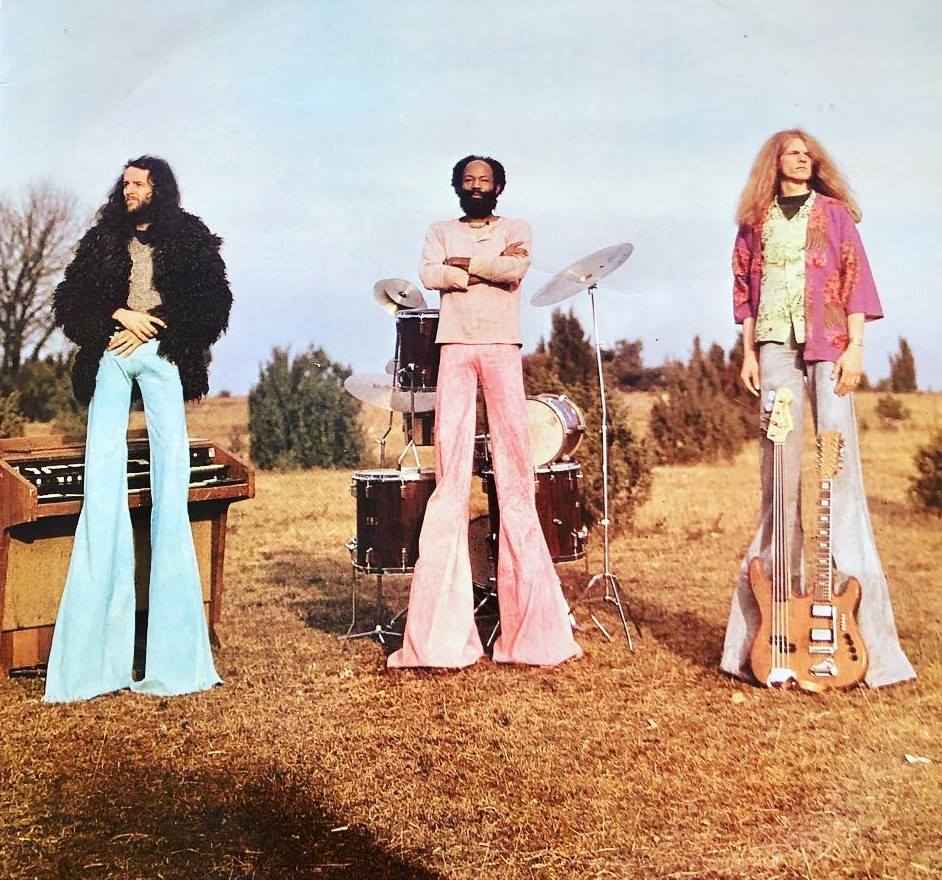
Association P.C.
Guitarist Toto Blanke’s experimental jazz rock group (well really it would be drummer Pierre Courbois’ band, since he’s the P.C.). All of their albums are more towards “out jazz”, with some rock elements interspersed throughout.
Ceddo
Ceddo is very much from the jazz school, but in the same way as Association P.C. and Electric Circus. Long tracks, and the guitar playing gets pretty wiggy, so a real plus there. Later in their career, Ceddo moved more toward traditional jazz rock and even smooth jazz.
Curt Cress Clan
Curt Cress Clan had one album released smack dab in the middle of the funky fusion era, and this album falls right in lockstep with expectation.
Cry Freedom
One of the earlier entries in Germany’s huge fascination with everything jazz fusion. By the 1980s it seems there were hundreds of such releases. Primarily instrumental sax/guitar/organ/synthesizer driven numbers, with a stronger than usual emphasis on melody. Not quite at the level of Embryo or Missus Beastly, but more thought out than Kraan, Headband, Morpheus, etc… File next to Katamaran.
Drum Circus
A mixture of avant-garde rock and a distinctly MPS jazz-rock school approach similar to Association P.C. perhaps.
Ex Ovo Pro
Yet another fine German fusion band from the late 1970s. Ex Ovo Pro play a typical Eurofusion with melodic wind lines (generally supplied by sax with some flute), some good deep grooves, acid-y guitar solos, with some standard late 70’s CTI fusion. At their best, similar to groups like Missus Beastly or the Canterbury scene.
Exmagma
While I tend to see many reviews point the listener to Soft Machine and Weather Report, I personally hear very little of that. What I do hear is exactly the pedigree of the band – and that would be Wolfgang Dauner’s Et Cetera. It’s a bit more progged up, and less improvisational overall, but in effect Dauner’s stamp is all over Exmagma’s sound. It’s keyboard driven, and quite inventive, with multiple shifts within each short track.
Floyd Hunchback Group
Floyd Hunchback Group are a tough band to describe. You can tell they’re jazzers, and the typical late 70’s fusion elements are all out in force (Rhodes, sax, funky bass). But they have this mean streak too, and some of the gymnastic rhythms, coupled with Moog and guitar solos, point to a love for complex instrumental progressive rock. The drumming is quite exceptional. Strangely I’m hearing more of a mid 70’s Eastern European sound here, as found in bands like Fermata or SBB.
Glatter Wahnsinn
Herrgottsax
A strange band that mixes children’s voices, but with a superbly crafted ‘Kraut fusion’ sound in the Missus Beastly, Munju, and Mosaik style.
Isaiah
A fine mixture of blues rock and jazz fusion.
Iviron
Iviron were a band from Austria (not Germany as commonly presumed), who released one unusual fusion album with many disparate ideas. Unusual in that they constructed their album more in an early 1970s exploratory style, but the sound was more relevant to the later 70s / early 80s time frame. There’s a real sense of adventure (i.e. a lot of East-West references), and even a touch of the psychedelic – a rare sight indeed for 1981. Flute and wordless female vocals play a major role in their sound. Also contains some mellotron, not a common sound for the late date.
Join In
Kaleidoskop
At the crossroad of jazz and rock, with emphasis on the latter. Sax, flute and organ lead the solo parade (there are no less than 3 full time winds players). Some inventive compositions, and the progressive rock element comes out in the unison playing, which at times is complex. Occasionally I hear same period Missus Beastly, though Kaleidoskop are definitely more jazz oriented.
Katamaran
The endless German jazz fusion era of the late 70s and early 80s strikes once again with Katamaran. The debut is more in line with the traditional scene (Moira, Kraan, etc..) with hot playing, memorable melodies, and tight unison runs. Later albums moved towards traditional jazz.
Kjol
Kjol were a Swiss based jazz rock quartet, lead by renowned saxophonist Brigeen Doran, and her brother Dave on drums. Kjol play in the mid 70s style of jazz rock, as one might hear on the German MPS label during this era.
Kontrast
Kontrast were Out of Focus Ver 2.0, and at this point in their career they sounded more like Embryo than Embryo did! Kontrast band leader Remigius Drechsler had been with Embryo for about a year, so perhaps not so surprising. Strong ethno prog/jazz rock with flute, sax, stringed instruments, with Asiatic/North African melodic themes. Some fusion and more than a hint of the psychedelic. Very much out of its time, and decidedly non-80s sounding.
Volker Kriegel
A major artist in the German jazz rock scene who has multiple albums.
Joachim Kühn
Another major jazz rock player from the MPS label with multiple albums.
Rolf & Joachim Kühn and the Mad Rockers
Leucozyt
Leucozyt play a more melodic instrumental jazz rock with sax, flute, and guitar leads.
Lindwurm
Lindwurm plays a type of high energy fusion, with active percussion and some nice guitar. File next to the French group Spheroe and the To Be album on Brain.
Lenny Mac Dowell
Multiple albums from the German flutist with the Scottish name! I’ve only heard ‘Balance of Power’ (1984) which is a nice effort.
Message
Message are definitely a classic ‘Krautrock’ band, and their first two (awesome) albums do not belong in this particular list (or they would be ranked much higher). But the 3rd self-titled album is a fine example of the ‘Kraut Fusion’ sound. From here, they moved further away into commercial realms.
Morpheus
Niagara
Niagara were founded by drummer and percussionist Klaus Weiss, who also happened to be the leader of the fine jazz rock group known as Sunbirds. Niagara released three albums in the early to mid 70s, the first which is entirely percussive. Their second album S.U.B. is a jamming rock fusion session with an all star cast including Daniel Fichelscher (Popol Vuh), Kristian Schultze (Passport, and leader of the The Bridge / Recreation album), and Udo Lindenberg among a handful of others. The presence of trumpet and the bass heavy percussive driven sound reminds me of early 70’s Miles Davis, especially on the opening title track.
Nimbus
Nimbus are an incredibly obscure German band who released one highly melodic instrumental jazz rock album, with guitar and keyboards in the lead. Bands like Surgery, Mosaik, Moira, and Profil are all good guideposts here.
Opossum
Opossum is the predecessor group to Morpheus. And after hearing this archival release, one can tell that Opossum is much looser in their embryonic stages to the more rigid Morpheus. Despite lacking cohesion and strong melody composition, the rough styling here can be quite appealing. Maybe like a less avant-garde Exmagma perhaps. I also hear some Xhol especially considering their own archival releases. Or even Missus Beastly with Eddy Marron. It’s at that borderline area of jazz and Krautrock.
Prosper
Prosper were at the crossroad of jazz fusion, symphonic progressive rock, and more experimental music.
Schäggi Bädsch
A perfect fit for the Schneeball label, as elements of label founders Embryo and Missus Beastly both can be found. There’s a trace of the ethnicity that the former brings, with a certain jazz rock abandon of the latter. Perhaps ties closest to Embryo’s Zack Gluck or maybe even the post Out of Focus group Kontrast.
Kristian Schultze Set / Overdrive
Kristian Schultze Set is the archival name for the band only known as Overdrive prior. Their music is a fine set of gritty electric piano oriented jazz (…rock) with plenty of fuzzy and dirty sounds including distorted bass and keyboards. Nice use of flute as well, and their sole album features a plethora of well written melodies.
Sideline
The music from Sideline is a bit edgier and more melodic than your standard late 70s/early 80’s breezy ‘Kraut Fusion’ album. And it sounds like it was recorded a few years earlier when jazz musicians were still exploring the exciting possibilities of rock.
Snowball
Snowball were a supergroup of sorts. Formed out of the Curt Cress Clan, which featured Passport veterans Cress and Kristian Schultze, along with former Embryo (and other German fusion/rock bands) bassist Dave King. These three from CCC were joined by none other than Nektar vocalist/guitarist Roye Albrighton to try their hand at the more commercial late 70s jazz funk sound that permeated the era.
Third Eye
On the surface, Third Eye would seem to be a typical mid to late 1970s ‘kraut fusion’ album, of which there are dozens. That is, until you hear the mellotron being played like a flutist would play his solo. Eclectic is the best word to define Third Eye. Later albums moved more toward traditional jazz.
To Be
To Be play a Latin tinged fusion – that is to say an instrumental mid 70s Santana mixed with Return to Forever. Some fine guitar solos, extra percussion, and complex unison runs are what you’ll hear.
Tyll
Tyll were a very disparate group and each track on their sole album is different from the other. You’ll hear fiery fusion workouts, folk rock, world fusion, straight up hard rock, and even some politrock (tongue in cheek apparently) sung in German.
Manfred Hübler & Siegfried Schwab
Their one album Vampiros Lesbos is pretty much what you would expect from a work such as this: Psychedelic tinged jazz rock instrumentals. Nothing cutting edge, but good rhythms and wonderful early 70s analog tones.
Virgin’s Dream
Virgin’s Dream are very much a product of the late 70s and early 80s German fusion scene. Perhaps a bit more tropical, and funky, than most. Comparisons to Michael Borner’s Sun or some of Syncrises’ work wouldn’t be out of line. As usual, the guitar work is exemplary, a trademark of the time and place.
Mal Waldron, Jimmy Jackson, Eberhard Weber & Fred Braceful
Steig Aus itself is beholden to this album, and it features key contributors to the German jazz rock scene, even though most of the players are American.
Tier 4
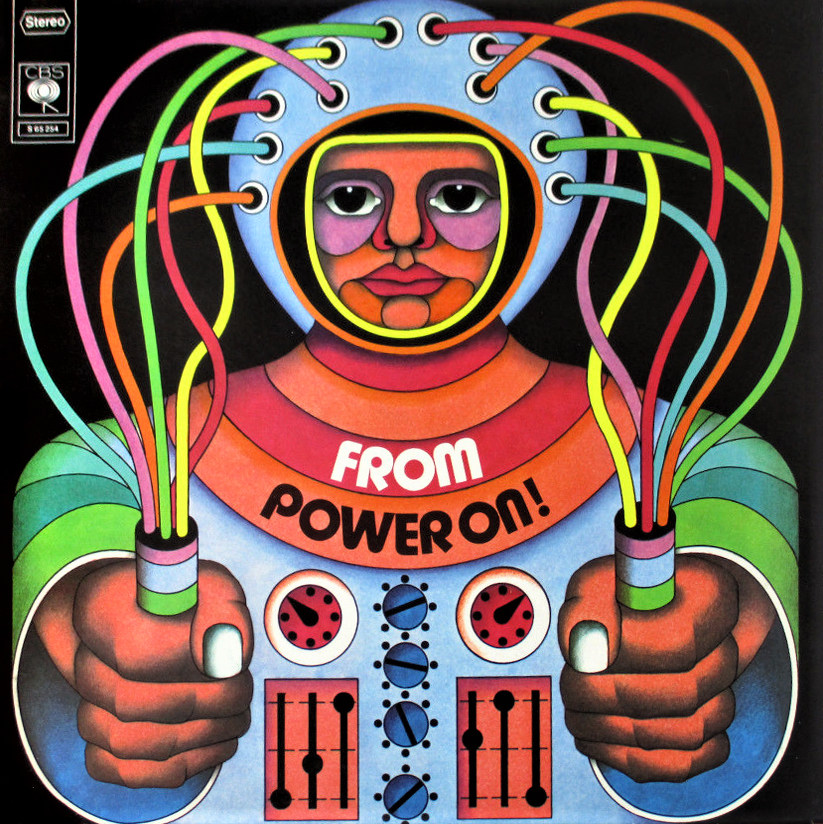
Arakontis
Arakontis have one live album that is a fine Latin fusion with some nice guitar driven melody lines, and a fair amount of electric piano. Not atypical for the time and place, and another good example of the style. Not as fusion oriented as Rozz and less Latin influenced than To Be, but both albums provide guideposts of what you can expect from Arakontis.
Atrium
Just when you thought you’d heard every German funky fusion band from the late 70s and early 80s, in flies yet another one – this time it’s Heidelberg’s Atrium. Anything from funky to disco to psychedelic ‘Krautrock’ is what you’ll fine here.
Bakmak
Funky fuion with some good Hammond organ.
Dieter Bihlmaier Selection
Jazz flute primarily.
Michael Borner’s Sun
Borner is a lead guitarist and his band Sun is somewhat dominated by his playing. There’s quite a bit of sax too, anything from Coltane-ish squeals to smooth jazz. You can also expect some punchy horns and orchestration too. The fusion on display here is fairly typical for the era – one that possesses a light, sunny, Caribbean influenced tropical sound. Jazz, funk, and yea, fuzak styles are all peppered in as it goes. Not related to the (better) Sun band mentioned above.
Certain Lions & Tigers
Chameleon
Standard issue Euro fusion, with soprano sax leads and a warm, sunny texture.
Deja Vu
A fine mixture of symphonic progressive rock and jazzy fusion.
Dizzy Bats
One of many bands to be compared to an “x Placebo” where x = country of execution. In this case we supposedly have the Swiss Placebo (though I thought Lost Peace was closer in style). Still a pleasant bit of instrumental jazz funk with funky bass, Rhodes, vibes, sax, flute, etc… – speaking of which, there are a couple of flute driven numbers that do indeed recall Marc Moulin’s bunch.
Elastic Rock Band
Light and breezy ‘Kraut fusion’, with some good guitar leads.
Fisherman’s Walkband
Fine mixture of jazz rock, blues, and Latin fusion.
From
Solid early 1970s jazz effort with rock overtones. Similar to many of the albums on the MPS label during this era, though a bit more towards traditional jazz than the Wolfgang Dauner’s and Association P.C.’s of this world. From is lead by an organist, but saxophone is the primary instrument. Pretty loose in the structure department, which allows room for many individual solos, including the drums.
Grotesk
Haboob
I.D. Company
Split group between two soon-to-be well known female vocalists. One side of the band features Frumpy’s Inga Rumpf and her masculine vocal style. The music is a combination of blues, jazz and Indian music – and sounds like some of the better moments of Krokodil’s An Invisible World Revealed. Dagmar Krause’s side is considerably more experimental, foreshadowing her later work with Slapp Happy, Art Bears and Henry Cow amongst others. The music follows in a similar manner, and is clearly going for a free jazz sound.
Jigsaw
Jigsaw play a fine sprightly Latin styled jazz album, with Les Paul styled leads, piano, and plenty of percussion.
Känguru
Kanguru were a band formed from the ashes of other German jazz fusion bands of the time, including the group To Be. The latter offering a guidepost to the sound you can expect from Känguru, especially considering the late 70s Santana influence.
Key
Key are yet another fusion band from Germany from the late 1970s scene. Though I’d say Key definitely are on the jazz side of the equation. Featuring long sections for trumpet and sax solos, not to mention the piano and standup bass providing the backdrop and atmosphere.
Ralf Nowy
Of his many albums, I’ve only heard his debut ‘Lucifer’s Dream’, and it’s a clear fit for this list.
Orexis
A prolific band with 6 albums, and I’ve only heard 2 to date. Mixture of acoustic world music and jazz.
Dave Pike Set
International group, lead by American Dave Pike, with a strong Dutch contingent. All the same, they were in and out of the German MPS scene. The only album I’ve heard to date is ‘Infra-Red’.
Pyranha
Pyranha sounds like a lost band recording for the Futura label. There’s quite a bit of psychotic ranting in French over studio effects, vibes, guitar and percussion. Also some organ and electric piano driven rock sessions. Can get too experimental at times.
Rozz
Both Rozz albums are well played fusion with a focus on the guitar work, as was typical from this era of German jazz rock. Excellent playing all around and feature fine production work. Reference groups would be Return to Forever or Weather Report, or for local flavor – Syncrisis or To Be.
Uve Schikora
Shivananda
Standard issue fusion, with sax and guitar leads. If you like mid 70’s European jazz rock, then you’re certain to enjoy Shivananda.
Skyline
Somewhat stilted jazz funk fusion combined with the slow moving German symphonic sound of the day (similar to other German bands like Fly, Albatros and Indigo). Skyline proved to be far more interesting live as found on the Umsonst und Draussen festival LPs.
Strinx
Very fine atmospheric jazz / fusion album, with violin as the primary instrument. More jazz focused than what I usually prefer, but I could see fans of the MPS label really flipping for this one.
Train
German band Train puts the jazz in jazz fusion. Mostly this is sax and toned down guitar driven jazz rock. Though they also could surprise with Middle Eastern flute and percussion.
Virgo
Virgo managed to get out 4 albums before calling it a day.
Barney Wilen and His Amazing Free Rock Band
Though Wilen himself is French, the band was German based.
Bottom Tier
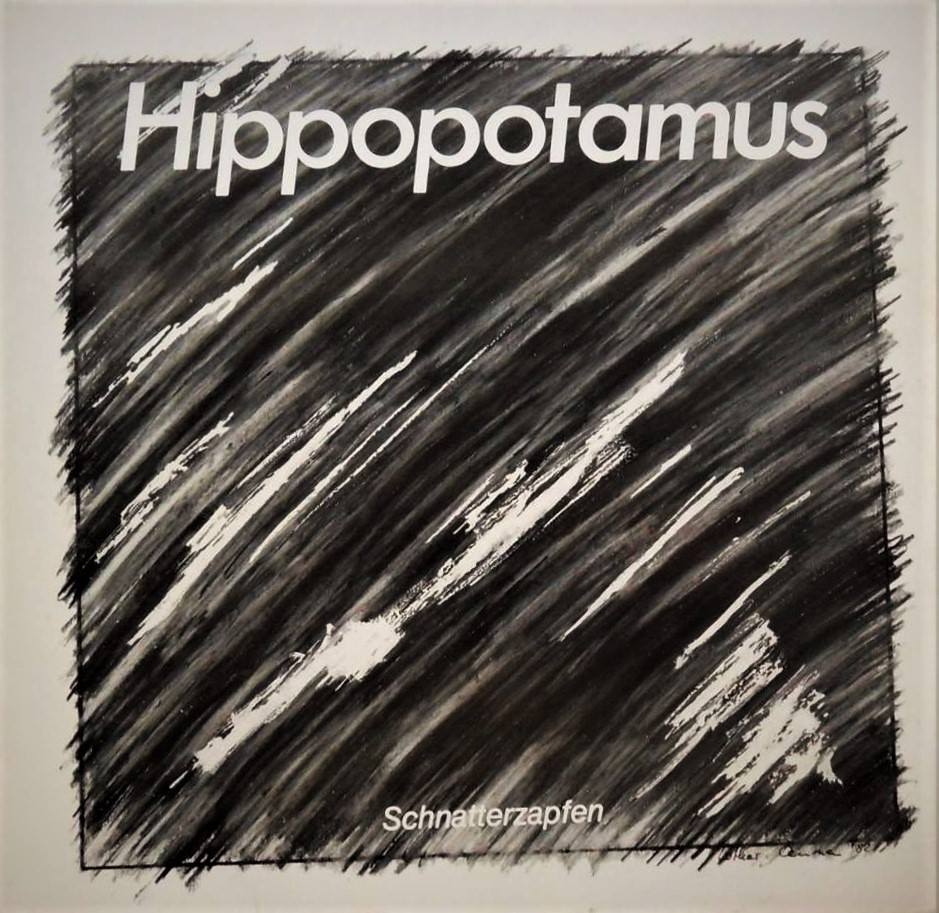
Firma 33
Interesting jazz rock combo that sounds like a merger between Missus Beastly’s Dr. Aftershave and the Mixed Pickles mashed up with Grobschnitt’s Jumbo Mit Deutschen Texten. As such, there’s an interesting cross-section of fine jazz fusion mixed with an incurable goofiness component, that ultimately is lost on everyone but German speakers… and probably them too.
For Example
Starting out in superb Chicago Transit Authority progressive horn rock territory, the band later moved to horn rock with soul pop. Disappointing.
Headband
Standard issue fusion with guitar and soprano sax leads. Certainly less interesting than similar groups like Sun and Surgery for example.
Hippopotamus
Hippopotamus is frequently lumped in with the ‘Kraut Fusion’ crowd (and I have it in my own list), but it isn’t really. The instrumentation is alto and tenor sax, piano, lightly amplified electric guitar, bass, and drums. It’s as jazz as jazz is. There’s absolutely zero edge here.
Ikarus
Different band than the excellent 1971 album on Plus. Basically a German sung commercial rock, mixed with lightweight all instrumental fusion.
Indiscreet
Annoying mid 80s band who recall Belew era King Crimson, but with a free jazz bent.
Kickbit Information
Messy free jazz rock improvisations lead by Guru Guru bassist Uli Trepte.
Maloo
All instrumental light jazzy rock. Rhythms are pure jazz while the guitarist noodles away with a slight amplified tone.
Nada
Primarily a jazz group, but with plenty of rock fusion elements in tehir sound. In particular the flute driven numbers as well as an occasional guitar rave-up will make you turn your head up. Otherwise it’s a lot of jazz tone guitar and sax solos.
Romantic Warrior
No doubt named after the famous Return to Forever album, this German band doesn’t quite possess the vibrancy of Corea’s classic bunch. There’s the slick-as-a-butter-dish production, with slap bass, happy rhythm guitar and digital drums. However all is not a loss, as the lead guitar work has a slight bite to it, and there’s even a little sitar to break up the monotony. If the term “1985 jazz fusion” doesn’t have you fleeing for the exits, then definitely give this band a chance. Otherwise run. Run faraway.
Styff Nack
A mix of funk and Genesis-inpired vocals. Been awhile since I heard this one, but don’t recall it being a highlight.
Varis
Another one of those albums lumped in with the ‘Kraut fusion’ movement, but they are really a jazz group with few rock elements – similar to Hippopotamus or Quasimodogeniti. Some nice flute, sax, Rhodes and jazz guitar leads.
Kraut Fusion festival albums
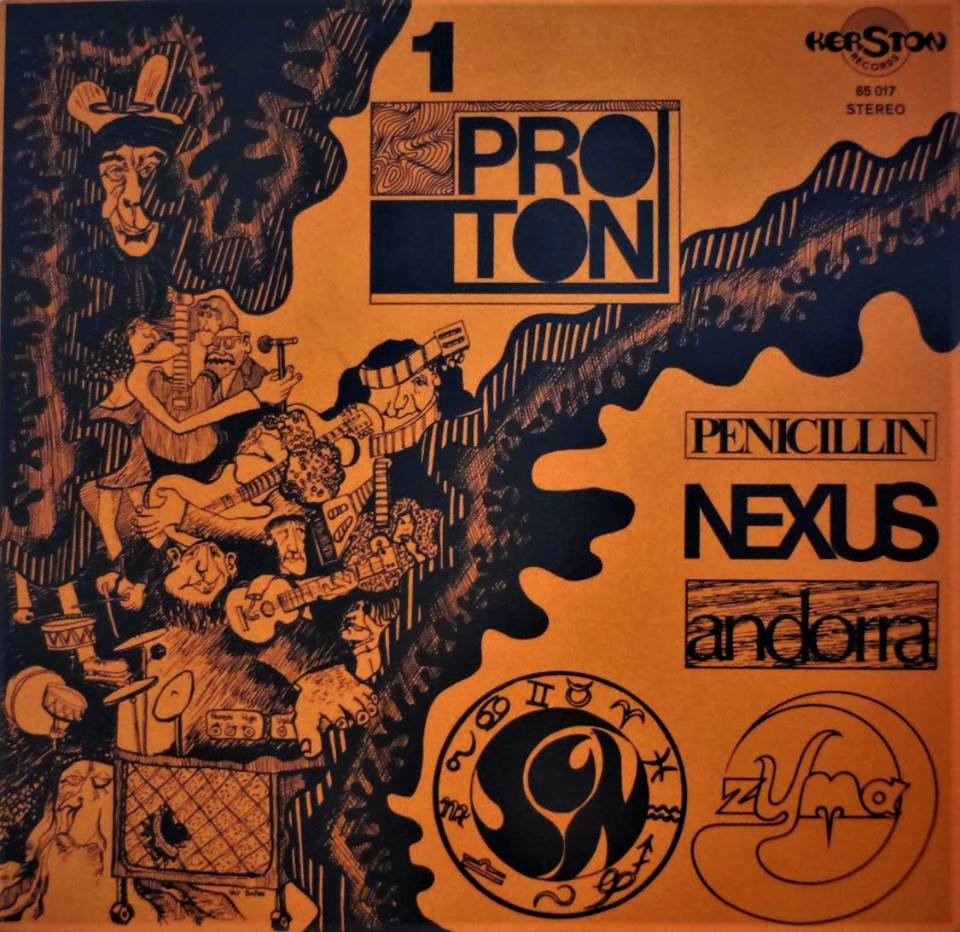
Open Air Concert – Vlotho-Winterberg (1975)
Umsonst & Draussen: Vlotho 1976 (1976)
Umsonst und Draussen – Vlotho ’77 (1977)
Umsonst und Draussen – Porta Westvlothica 1978 (1978)
The above 4 albums all feature some real gems in the ‘Kraut Fusion’ space. There’s also some polit-rock tunes to wade through, but mostly the album’s are a delight to hear.
Proton 1 (1974)
Adding for Side 4 which is the Nexus / Sun side.
Birth of a New Place (1978)
Sloe Gin is the real highlight here. A real Canterbury vibe exists from the band, with wonderful flute and fuzz guitar soloing. Good soft affected English vocals as well. Would love to see an archival release here.
Jazzkraut: Teutonal Jazz Rock Excursions (2011)
This is a great primer.
– Tom Hayes

